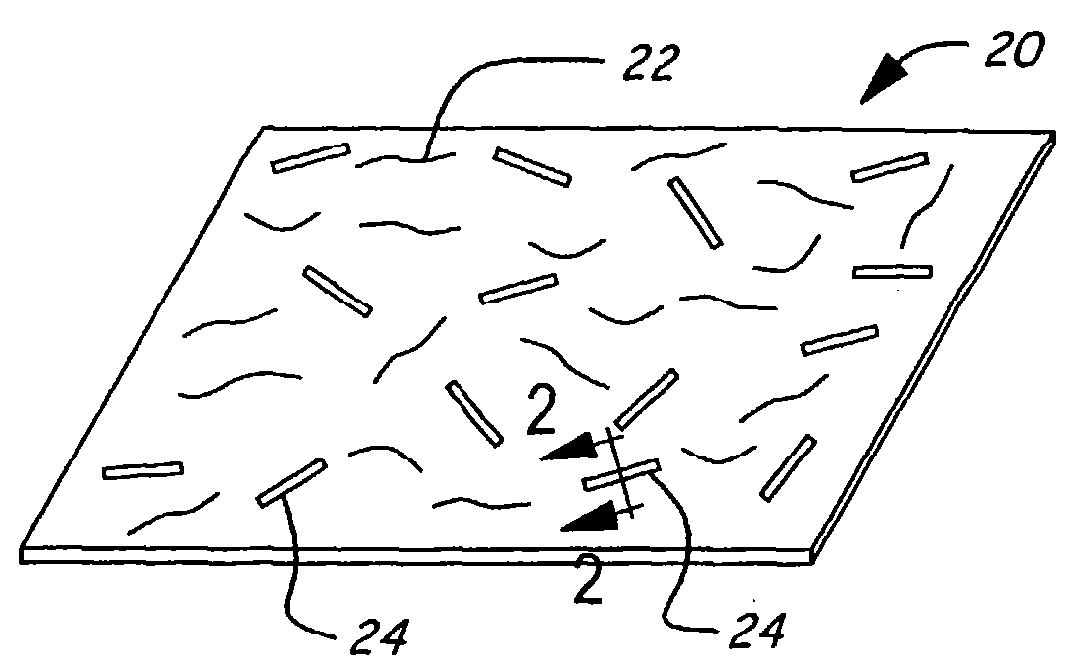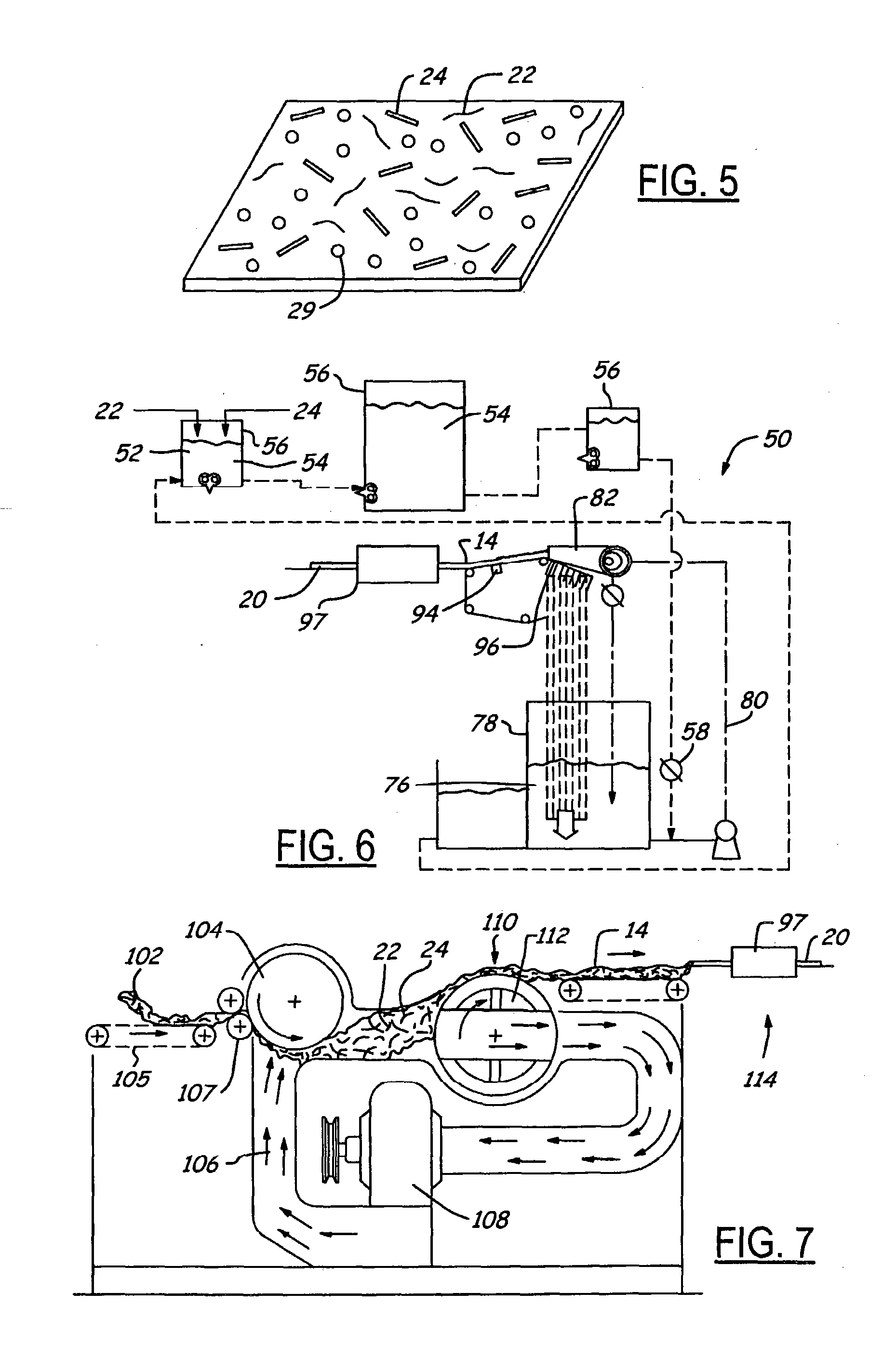Conformable surfacing veil or reinforcement mat
a technology of surfacing veil and reinforcement mat, which is applied in the field of fiber reinforced materials, can solve the problems of difficult conformation to complex shapes, glass veil likely to form a crease, and surfacing veil to tear, and achieve the effect of improving softness
- Summary
- Abstract
- Description
- Claims
- Application Information
AI Technical Summary
Benefits of technology
Problems solved by technology
Method used
Image
Examples
example 1
[0047] In a preferred embodiment, a veil with a basis weight of 50 g / m2 was prepared on wet process machine by mixing 540 pounds of 13 micron×18 mm Owens Corning 9501 wet chop glass fibers and 220 pounds of 3.3 dtex×12 mm KoSa Type 105 bicomponent fibers in 20000 gallons of whitewater. The slurry was mixed with vigorous agitation for approximately 10 minutes and was then transferred to the machine chest. A 1000 gallon per minute stream of this thick stock slurry was delivered into a 20000-gallon per minute white water flow and the resulting thin stock was delivered to the headbox of a Sandy Hill inclined-wire Fourdrinier machine, operating at a line speed of 350 feet per minute. The dewatered sheet is then run through a drying oven at 170 degrees Celsius without the addition of any other binder, thereby producing a tough, stretchy product with a must softer feel than standard glass veils.
example 2
[0048] In another preferred embodiment, veil with a basis weight of 200 g / m2 was prepared on the same machine as in Example 1 by mixing 1625 pounds of Owens Corning 9501 glass fibers (23 micron×37 mm) and 160 pounds of KoSa Type 105 bicomponent fibers (3.3 dtex×12 mm) in 20,000 gallons of whitewater. In a manner similar to Example 1, this thick stock slurry was used to form a nonwoven web at a line speed of 250 feet per minute. This mat was dewatered and dried at a temperature of 170 degrees Celsius. The mat formed here is much more flexible and has a much softer feel than Owens Corning VL8101 reinforcement mat, which is comprised of the same glass fibers but bonded with an amount of thermosetting acrylic binder, equivalent to the amount of bicomponent fiber in the present example.
[0049] Potential applications for the conformable veil 20 formed in accordance with the present invention include a surfacing veil for the molding of reinforced plastic articles with compound curvature su...
PUM
| Property | Measurement | Unit |
|---|---|---|
| Temperature | aaaaa | aaaaa |
| Temperature | aaaaa | aaaaa |
| Length | aaaaa | aaaaa |
Abstract
Description
Claims
Application Information
 Login to View More
Login to View More - R&D
- Intellectual Property
- Life Sciences
- Materials
- Tech Scout
- Unparalleled Data Quality
- Higher Quality Content
- 60% Fewer Hallucinations
Browse by: Latest US Patents, China's latest patents, Technical Efficacy Thesaurus, Application Domain, Technology Topic, Popular Technical Reports.
© 2025 PatSnap. All rights reserved.Legal|Privacy policy|Modern Slavery Act Transparency Statement|Sitemap|About US| Contact US: help@patsnap.com



